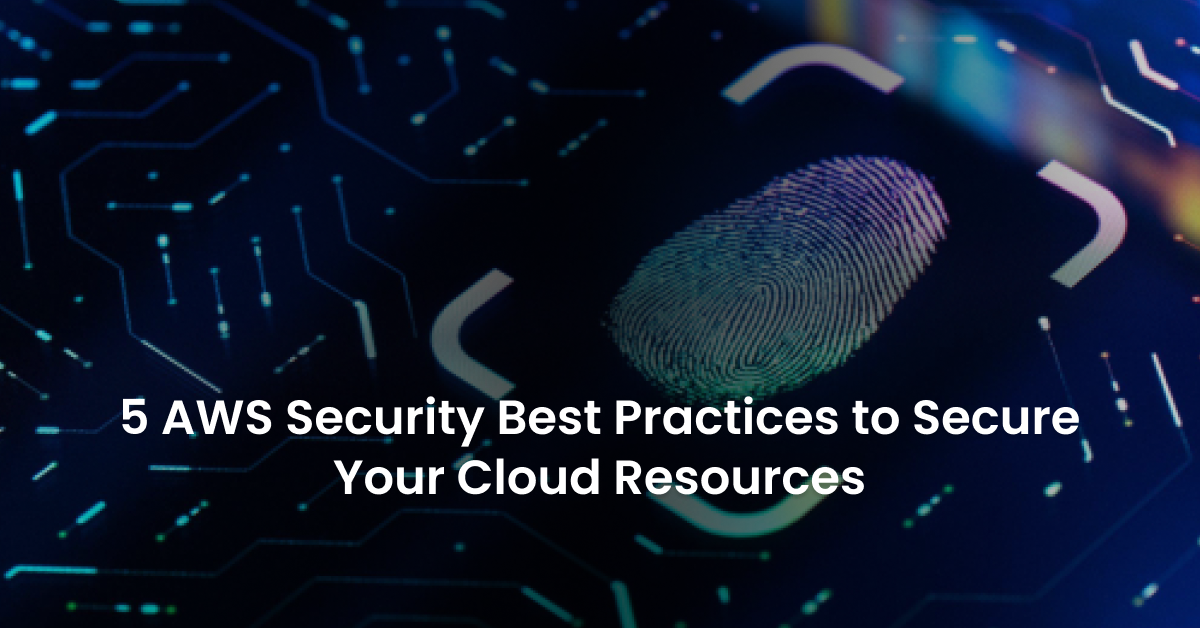Keeping your cloud resources secure from cybersecurity threats is highly essential. Security in the AWS (Amazon Web Services) is a shared responsibility model between AWS and the user. AWS secures the infrastructure under which the resources where users build workloads. On the other hand, the user has to secure their workloads. The AWS infrastructure itself is secure, and therefore, the user has a crucial role in securing their cloud resources.
Recently, security threats have become more sophisticated, forcing organizations to rethink their security strategies. From malware and Trojan attacks to ransomware, criminals can attack your organization’s cloud resources anytime. In this article, we’ll provide some of the best AWS security practices to secure your cloud resources:
Use S3 Encryption
A rule of thumb is to encrypt all data, both at rest and in transit. Data encryption makes data unreadable unless decrypted, which means malicious attackers cannot compromise data quickly in case they gain access to it.
Encryption provides an additional security layer, as only persons with decryption keys can access the data.
Backup All Your Data
It is essential to back up all data stored in the cloud. Data backups provide 99.99% durability in case you lose your vital data.
Data backup has proved critical, especially with instances of ransomware spiraling every day. If you suffer a ransomware attack, you can rely on the backed-up data for optimal business continuity. Therefore, it’s essential to configure automatic backups for EBS (Elastic Block Storage) volumes, S3 (Simple Storage Service) objects, and RDS (Relational Database Service) Instances.
You should follow up the data backup with a disaster recovery plan. A disaster recovery plan is a strategy that helps restore your backups after losing data, because it helps restore your dataset to its original state in a specified period.
Use IAM to Provision Access Control Capabilities for AWS Users
Identity and Access Management (IAM) helps you to manage who accesses your cloud services and resources. IAM policies provide access privileges to users depending on their roles. You can use these policies to deny some users from accessing resources that they don’t need.
With IAM roles in place, you can identify whoever accessed your resources at any time, which is crucial as it helps to track user activity in your organization.
Configure Robust Security Groups for EC2 Instances
Security groups provide a layer of security over your EC2 (Elastic Compute Cloud) Instances. A security group acts like a virtual firewall that controls traffic in and out of the instances. To protect your Instances, you need to implement stellar security groups and rules according to your security demands. This way, it’s difficult for unauthorized traffic to access your Instances.
Besides security groups, it’s also essential to implement network access control lists (NACLs) for subsets. NACLs are rule-based protocols that act as virtual firewalls that control traffic in and out of your subsets.
Implement Threat Detection Systems
Threat detection and continuous monitoring are essential for securing your cloud resources. They provide visibility into your AWS security environment.
AWS provides a range of threat detection systems such as Amazon GuardDuty and Amazon Inspector to help monitor malicious activity. With threat detection systems in place, you can detect unauthorized behavior in real-time.
Conclusion
Adhering to the above AWS security best practices can go a long way to secure your resources. They provide defense in depth, preventing malicious attackers from accessing your crucial assets. The critical thing is to maintain cloud security such that you cannot lose crucial data or suffer downtime.
nOps helps users analyze their resources against the Well-Architected Framework to enhance security. Through nOps, you can build, manage, and deploy secure workloads on AWS seamlessly.
Get in touch with us today or schedule a demo to get started with nOps.



